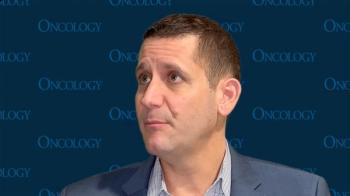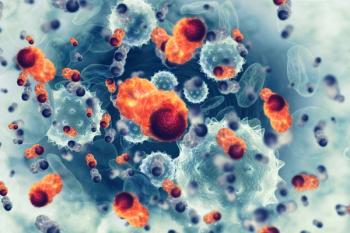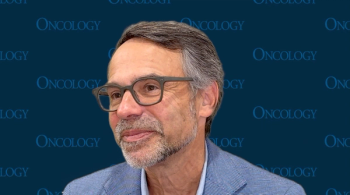
- ONCOLOGY Vol 13 No 3
- Volume 13
- Issue 3
Multicenter, Phase III Study of Iodine-131 Tositumomab (Anti-B1 Antibody) for Chemotherapy-Refractory Low-Grade or Transformed Low-Grade Non-Hodgkin’s Lymphoma
Iodine-131 tositumomab (Bexxar) is a radiolabeled murine IgG2a monoclonal antibody directed against the CD20 antigen on
Iodine-131 tositumomab (Bexxar) is a radiolabeled murine IgG2a monoclonal antibody directed against the CD20 antigen on B-cells. Sixty patients were enrolled at eight sites in this phase III study designed to compare efficacy outcomes between the patients last chemotherapy regimen and iodine-131 tositumomab. Thirty-six (60%) patients had low-grade non-Hodgkins lymphoma, 23 (38%) had transformed low-grade NHL, and 1 (2%) had mantle cell lymphoma. Patients had to have received ³ 2 different chemotherapy regimens and had to have not responded to or progressed within 6 months of their last chemotherapy regimen.
Baseline patient characteristics were: median age of > 60 years, male (63%), median time from diagnosis (54 months), elevated lactic dehydrogenase (44%), lymph node ³ 5 cm (65%), median number of prior chemotherapies (four).
Patients received saturated solution of potassium iodide (SSKI) or Lugols solution beginning ³ 24 hours before the dosimetric dose and continuing for 14 days after the therapeutic dose. Patients received a single dosimetric dose (450 mg of antibody IV over 1 hour, followed by 35 mg of antibody radiolabeled with 5 mCi of iodine-131 over ½ hour) and then had three whole-body gamma camera counts obtained over the next 7 days.
The gamma camera counts were used to calculate the required activity (mCi) to deliver the desired therapeutic dose (65 cGy to the whole body for platelets 100,001-149,999 cells/mm3 and 75 cGy for platelets ³ 150,000 cells/mm3). The single therapeutic dose (450 mg of unlabeled antibody IV over 1 hour, followed by 35 mg of radiolabeled antibody over ½ hour) was administered 7-14 days after the dosimetric dose.
An investigator-assessed response was observed in 17 (28%) of 60 patients following their last chemotherapy regimen, compared to 39 (65%) of 60 patients following iodine-131 tositumomab (P < .0001; McNemars test). A complete response was observed in 2 (3%) patients following their last chemotherapy regimen, compared with 10 (17%) patients following iodine-131 tositumomab (P = .01; McNemars test). Of the 41 patients having nonequivalent durations of response (ie, durations of response > 30 days different), 9 had a longer duration of response following their last chemotherapy regimen and 32 had a longer duration of response following iodine-131 tositumomab (P = .0001; McNemars test). These response outcomes were reviewed by a masked independent randomized radiology and oncology review (MIRROR) panel and were confirmed.
The principal toxicity was hematologic; absolute neutrophil count (ANC) < 100 was 2%; platelets < 10,000 cells/mm³, 2%. The nadir typically occurred at week 5-6 with recovery by week 8-9. Transient, mild to moderate nonhematologic toxicity occurred, with the most frequent events being fatigue, fever, and nausea. Four (7%) patients developed antimurine antibodies.
CONCLUSION: These results confirm earlier data and indicate that iodine-131 tositumomab is a safe and effective new agent for the treatment of low-grade or transformed low-grade NHL.
Articles in this issue
almost 27 years ago
WHO Declares Lymphatic Mapping to Be the Standard of Care for Melanomaalmost 27 years ago
Navelbine Increased Elderly Lung Cancer Patients’ Survivalalmost 27 years ago
Consensus Statement on Prevention and Early Diagnosis of Lung CancerNewsletter
Stay up to date on recent advances in the multidisciplinary approach to cancer.
















































































